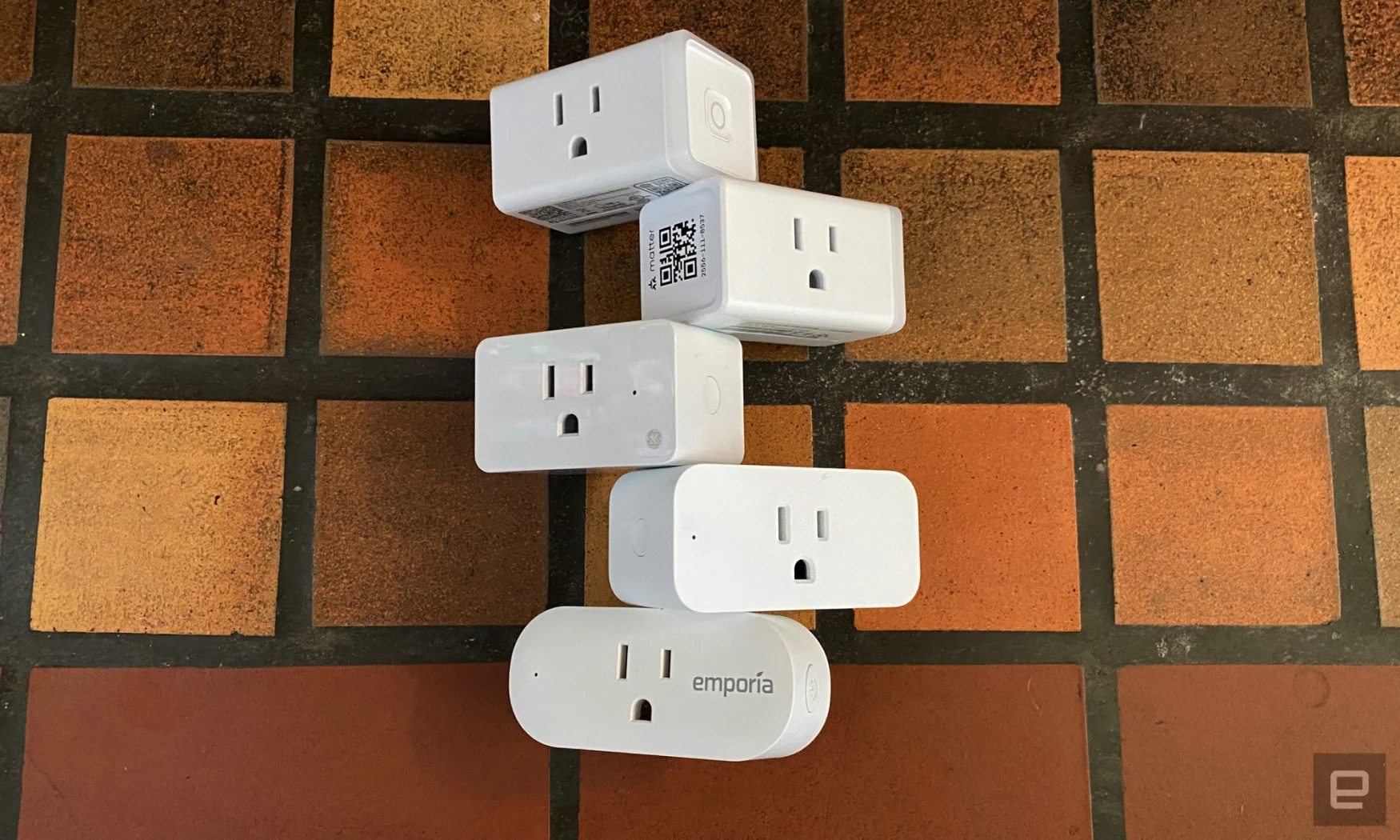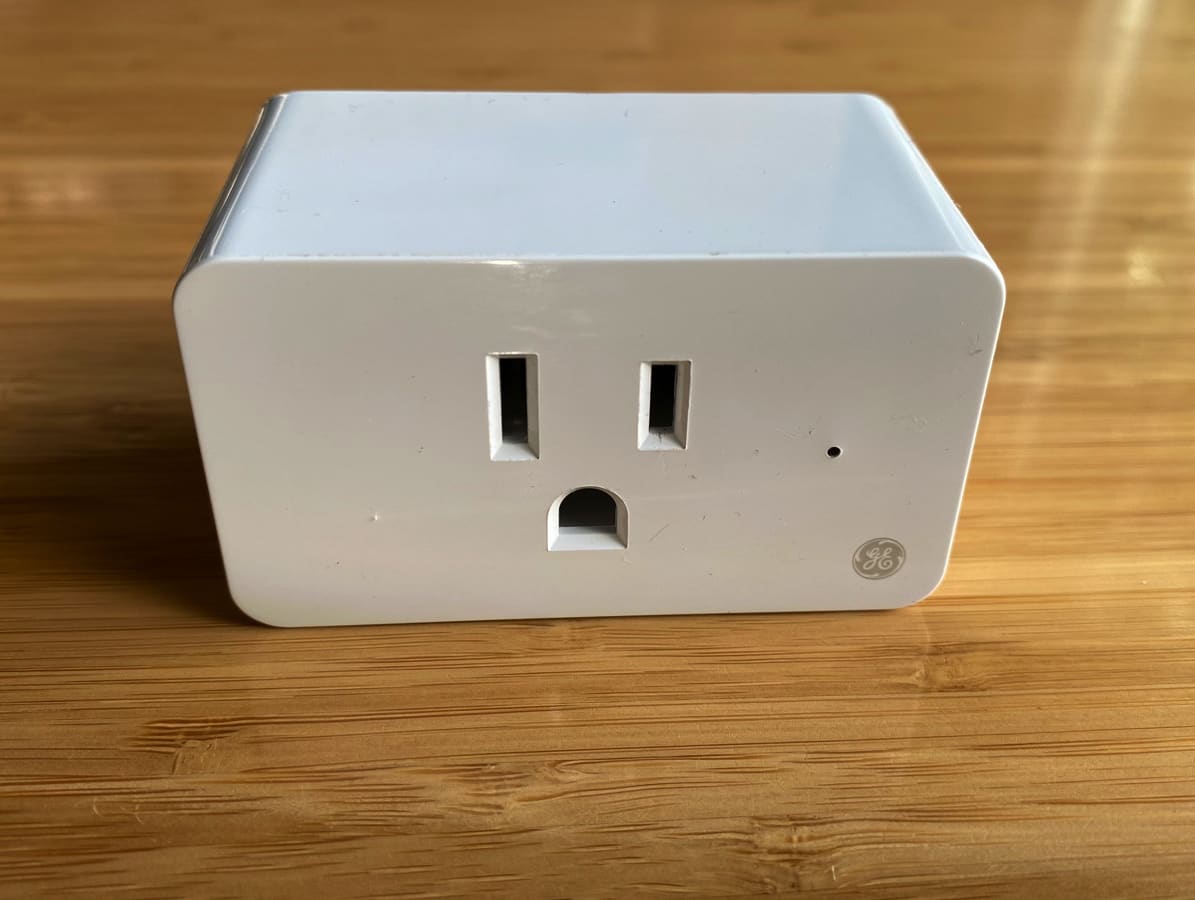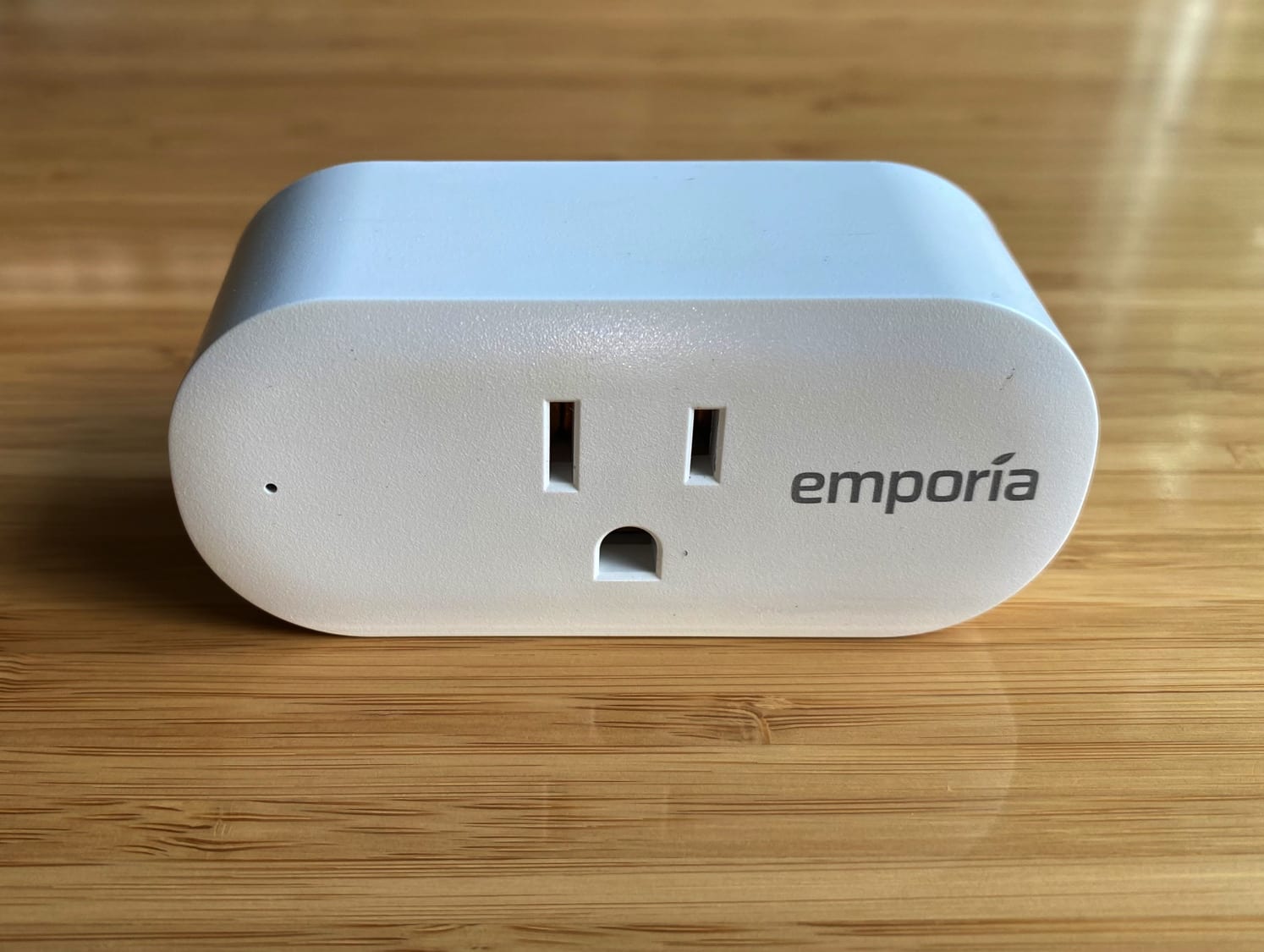The best smart plugs in 2023
Smart plugs are among the simpler smart home devices, giving you voice and app control over appliances like lamps, fans, humidifiers and basic coffee makers. You can create schedules and routines, too, either through a plug’s proprietary app or through your preferred smart home platform. But much like other IoT devices, which system plays nice with which plug depends on compatibility, and each brand’s app offers different features. We tested out ten popular options to see which are worth buying.
-
Best Overall
Kasa Smart Plug Mini EP25 (4-pack)
$40 -
Best for Alexa-Enabled Homes
Amazon Smart Plug
$25 -
Best Matter Plug
Kasa Matter Smart Plug KP125M (2-Pack)
$40 -
Honorable Mention
CYNC Indoor Smart Plug
$15 -
Honorable Mention
Emporia Smart Plug
$48
What to consider when buying a smart plug
Before you buy one, it helps to know what a smart plug can and can’t do. They work best with things that have an on/off switch, making them great for lamps and other lights. If you want a plug-in fan to move some air around before you get home, a smart plug can help. You can load a basic coffee maker with grounds and water the night before and wake up to a fresh pot in the morning. And instead of an air purifier running all day, you could set it to just run when you’re away. But any device that needs to be programmed further, or requires a stand-by mode, isn’t ideal.
Setup and use
Adding a smart plug to your home is relatively simple. You’ll use the manufacturer’s app to initially connect, after which you can add the plug to a compatible smart home ecosystem. Both the brand’s app and your smart home app will let you name the plug, set schedules and program “routines” which control multiple smart devices at once. But as you can guess, a manufacturer’s app only lets you control products from that brand. If you want to operate a plug from TP-Link’s Kasa, a bulb from GE’s Cync and a camera from Wyze, you’ll need to use a smart home platform, which means you’ll need to consider compatibility.
Compatibility
Smart home devices connect through wireless protocols, often using more than one to communicate with your phone, smart speaker, internet connection and in some cases, one another. The majority of smart plugs use WiFi, but some newer plugs use a low-power network standard called Thread. It’s more secure than WiFi, tends to be more reliable and its mesh capabilities provide stronger coverage as more Thread devices are added. These devices require a Thread border router, such as an Apple HomePod or TV, a fourth-generation Amazon Echo or Google Nest Hub.
Matter is a new wireless standard intended to solve compatibility issues between different brands and manufacturers, while also improving security and reliability. Only a few such smart plugs are available right now, and they currently work via WiFi, Bluetooth and Thread networks. These devices require a controller that stays at home, like a smart speaker, if you want to manage things when you’re out and about. If the device also uses Thread, you might need a smart speaker that acts as a border router, like the ones listed above. If all that sounds complicated, it is. Matter promises simplicity, but hasn’t delivered just yet.
As for Bluetooth, most plugs, including all Matter plugs, use the short-range protocol to get the device set up for the first time. Some can continue to run on Bluetooth in the absence of another option, but the connection isn’t as reliable and you won’t be able to control the plug when you’re away from home, or perhaps even just on the other side of the apartment.
Because Matter is relatively new, it may be easier to consider the manufacturer’s system you’d use the most. There are four major “branded” smart home platforms: Amazon’s Alexa, Google Home, Apple’s HomeKit and Samsung’s SmartThings. The first two work with the widest range of brands and are compatible with both iOS and Android devices. HomeKit not only limits app access to Apple devices, but it’s also compatible with fewer plugs. You can also turn to open-source software like Home Assistant or go with the larger functionality of IFTTT if you want to, say, tweet to turn your lights on. For the purposes of our testing, we stuck with the four big players. Nearly every plug we looked at clearly stated which platforms it works with, both on the packaging and retail product pages.
Of course, there’s no rule that says you have to stick with one home assistant. You might have an Echo Dot in the basement, a HomePod in the living room and a Google Nest Mini in the kitchen, each controlling their compatible devices. You only need to pair up the right smart home platform with the right device (and then just remember which speaker controls what).

Sharing
Once a plug is set up with your platform and voice assistant of choice, anyone can control the plug just by talking. If someone else wants to control things with their phone, things get more complicated. Google makes it easiest, allowing you to invite another person just by tapping the + button within the Home app. Whomever you invite will have full access to your connected devices – including cameras – so this is only for people you trust the most.
HomeKit makes it similarly easy to grant app access to someone else, but as with most things Apple, it only works for other iOS users. Amazon only allows you to share access to your Echo, not your connected home devices.
Many smart plug manufacturers allow you to share control through their app by inviting another person via email. But this only grants access to devices of that brand. Hopefully as Matter expands, multi-admin features will become more widespread.
How we tested
Before we decided which smart plugs to test, we considered brands Engadget staffers have had the best experiences with, both in review capacity and personally. We also checked out other online reviews. We then looked at factors like price, compatibility and relative popularity. I got ahold of ten smart plugs from eight manufacturers and set up each one using its proprietary app, then added it to all compatible smart home platforms. Plugging in a cadre of lamps, I tested the plugs using an iPhone 11, Galaxy S10e, Echo Dot, HomePod mini and Nest Mini. I accessed the plugs via the apps and through voice commands and controlled them in my home and away from it. I programmed schedules and routines and moved the plugs to different outlets, including ones in the basement to gauge range.
Here’s every smart plug tested before settling on our top picks:
-
TP-Link Kasa KP125M (Matter)
-
Eve Energy (Matter)
The best smart plugs
Best overall: TP-Link Kasa EP25
All of the plugs eventually did what they said they would, but each had a quirk or two that gave me pause – except TP-Link’s Kasa EP25. From installation to implementation, it was fuss-free and reliable. It’s also one of the cheaper plugs on our list at just $13 each (but you’ll usually find it in a four-pack). It works well with both iOS and Android and on all four smart home platforms. The Kasa app has a clean, intuitive design and includes the features you’d expect like timers, schedules, a vacation mode and smart actions (aka scenes). TP-Link makes a wide range of other smart devices, so you could expand your smart home without having to leave the Kasa app.
The EP25 is an updated version of the HS103 that adds HomeKit compatibility, so I was able to control it with both an iPhone and an Android phone. If you also live in a blended OS home, I recommend onboarding with the iPhone first. After tapping the + button in the Kasa iOS app, a HomeKit pop-up will prompt you to add the plug using the QR code from the box. (The code’s also printed on the plug, but that’s harder to access.)
Once set up in HomeKit, it was easy to add the plug to the other smart home apps. Google Home and SmartThings just need your TP-Link log-in details and Alexa uses the Kasa “skill.” Once you’ve added one plug, any future TP-Link devices you incorporate should automatically show up in each app. If you’re only using an Android device, the Kasa app will walk you through using a temporary Wi-Fi network to get the plug online.
After setup, I named the plug and assigned it a room (making sure it was the same in each app to avoid confusing myself). Then I programmed various routines and schedules and asked all three voice assistants to turn the light on and off – everything worked without a hitch. In the weeks of testing, the EP25 never had a connection hiccup, even after I relocated it to the basement, which is the farthest point from my router.
My single complaint is that sharing with another user isn’t supported within the Kasa app. You can share your log-in details with the other person, as the app does support access from multiple devices on one account. But Google Home feels like the best way to share smart home device control, whether that’s between iOS and Android devices or when everyone uses the same OS.
Best for homes with Alexa: Amazon Smart Plug
If you have many Echo devices and use Alexa to answer your questions, control your music and manage your timers, Amazon’s smart plug makes the most sense. Your Echos and Alexa app already have your details, so you won’t have to create an account, enter your WiFi password or switch to a different app, which makes setup mindlessly simple. In addition to naming your plug, you’ll also want to designate it as a light under Type in the settings menu. That way, when you say, “Alexa, turn all the lights off,” it will act accordingly.
I was impressed with the speed of the onboarding process and how seamlessly the plug blended into the Alexa ecosystem, giving it another IRL appendage to flex. I still get a small thrill when I say, “Alexa, goodnight,” and all goes dark. However, you won’t be able to use the plug with any other smart home app, which is why it’s best for those who’ve already gone all-in on an Amazon home.
The only other drawback, and it’s not a small one, is the Alexa app’s lack of sharing capabilities. You can create households that let other people in your home access your Echo speakers through their phone, but they can’t see your smart home devices. If you’re the only one who needs app access and everyone else in your home is happy to interact via voice commands only, this plug couldn’t be simpler. At $25, it’s not the cheapest smart plug, but like all things Amazon, it goes on sale fairly often.
Best Matter Plug: TP-Link Kasa KP125M
Only a handful of Matter-enabled smart plugs are currently available and the Kasa KP125M is the best of what we tried. It works with all four platforms, installs easily and reliably maintains connections. Most Matter devices need to be initialized with a QR code, but this plug also supports Bluetooth onboarding, which saves a step. I set it up through the Kasa app first and because I already had another Kasa plug installed, the process was simplified, automatically prompting me to add the plug with a couple of taps. Adding the device to Alexa, Google Home and Samsung’s SmartThings worked the same way, with each app letting me know I had new devices available to add.
To add the plug to HomeKit, I had to scan the included barcode. The process didn’t work at first and I ended up having to long-press the button on the side to make it enter pairing mode. Unlike some Matter plugs, KP125M doesn’t require a Thread border router. And because it’s also a WiFi plug, you don’t need a Matter controller, such as a smart speaker for access when you’re away from home. That said, many of the negative reviews on Amazon have to do with the plug’s poor HomeKit compatibility. In addition to the setup hitch I mentioned, the connection with the HomeKit app and Siri was extremely spotty until I added Apple’s HomePod mini to the mix as a dedicated hub. After that, the reliability improved.
It’s important to note that our best overall pick is $7 cheaper and also works with all four platforms. The higher price tag is likely due to the Matter logo on the side. The protocol is still very new, and honestly, I’d call the KP125M plug more of a hybrid WiFi-Bluetooth-Matter plug, which could be why it played nice with every platform. The other Matter plug, the Eve Energy Matter plug, requires you to have a HomePod for HomeKit access, a Nest Hub for Google Home connection and a SmartThings hub to make it work with Samsung’s system. The promise of Matter is faster and simpler connectivity – requiring three hubs to work with various platforms seems to miss that point.
Honorable mentions
GE Cync Indoor
My main concern with the Cync plug is the way the scheduling works within the proprietary app. Instead of programming when an outlet should turn on, you tell it when it should turn off. Despite my best efforts, I could not figure out how to program the Cync-connected lamp to come on at sunset, as I did with every other plug. Other than that, the app is very elegant, set up is easy and reliability is spot on. It only works with Alexa and Google Home, not HomeKit or SmartThings, but at $15, it’s a couple bucks cheaper than the Wyze plug that has the same compatibility.
Emporia Smart Outlet
At just $12 each (sold in a four-pack), Emporia Smart Outlets are a good choice for those who want to keep an exacting eye on their home’s energy use. Emporia also makes whole-home batteries and energy monitors, and their focus is more technical than slick. The plug/* wouldn’t connect until the third try, but after that, it worked well with both Alexa and Google Home apps. HomeKit and SmartThings aren’t supported, but for managing a home’s peak demand usage, there’s no better option.


